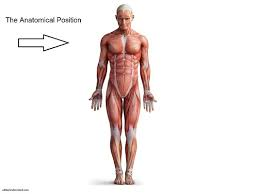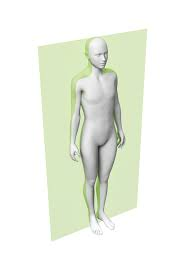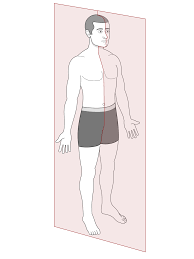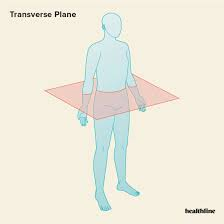Sports Medicine Positions, Planes, & Movements
1/28
Earn XP
Description and Tags
VA Lesson 4.3
Name | Mastery | Learn | Test | Matching | Spaced |
|---|
No study sessions yet.
29 Terms
Anatomical Position

Frontal (Coronal) Plane

Sagittal Plane

Transverse Plane

superior; inferior
toward the head end of the upper body; away from the head, lower
proximal—closer; distal—farther
near and far to the origin; usually used to orient the positions of structures along the limbs with respect to the trunk of the body
Medial—towards; Lateral—away
towards the middle or towards the edge; midline of a body in anatomical position
Anterior—front; Posterior—back
front and back of a body in anatomical position
Supine
horizontal position with the body facing upward ex. face up
Prone
horizontal position with the body facing downward ex. face down
Flexion—decrease; Extension—increase
decrease or increase the angle in-between two body parts
Hyperextension
abnormal or excessive extension of a joint beyond its normal ROM
Abduction—away; Adduction—towards
body movement towards or away from the body’s midline
Circumduction
movement of a body region in a circular manner in which one end of the region being moved stays relatively stationary while the other end describes a circle
Rotation
twisting or turning movement of a bone or body part; occurs within the vertebral column, pivot joint, or ball-and-socket joint
Supination—palm out; Pronation—palm backward
movements of the forearm
Dorsiflexion—up; Planter Flexion—down
up and down movements of the ankle joint = hinge joint
Inversion—angling bottom of foot toward midline; Eversion—angling bottom of foot away from midline
involves multiple plane joints among the tarsal bones of the posterior foot; toward and away from midline
Protraction—anterior; Retraction—posterior
anterior-posterior movements of the scapula or mandible
Depression—downward; Elevation—upward
downward and upward movements of the scapula or mandible
Excursion
side-to-side movement of the mandible
Superior; Inferior rotation
movements of the scapula—defined by the direction of movement of the glenoid cavity
Opposition—brings thumb into contact; Reposition—returning thumb to anatomical position
thumb movement that brings the tip of the thumb in contact with the tip of a finger; returning the thumb to its anatomical position
Pivot
uniaxial joint; allows rotational movement
Hinge
uniaxial joint; allows flexion/extension movements
Condyloid
biaxial joint; allows flexion/extension, abduction/adduction, and circumduction movements
Saddle
Biaxial joint; allows flexion/extension, abduction/adduction, and circumduction movements
Plane
multiaxial joint; allows inversion/eversion of foot, or flexion/lateral flexion of the vertebral column
Ball-and-socket
multiaxial joint; allows flexion/extension, abduction/adduction, circumduction, and medial/lateral rotation movements